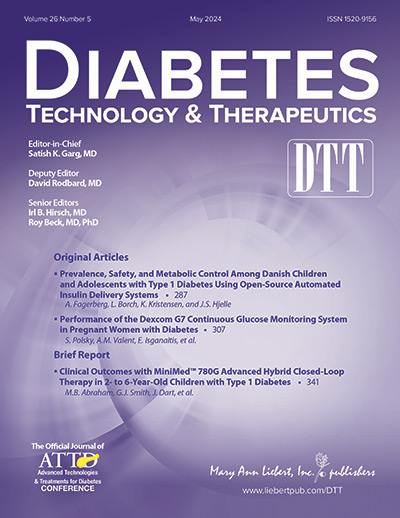美国不同人群从糖尿病前期发展为糖尿病的过程:一个机器学习模型。
IF 5.7
2区 医学
Q1 ENDOCRINOLOGY & METABOLISM
引用次数: 0
摘要
目标 迄今为止,还没有广泛实施的机器学习(ML)模型可以预测从糖尿病前期到糖尿病的进展。填补这一知识空白将有助于在这一异质性人群中识别高危患者,这些患者可能受益于有针对性的治疗和管理,以保护葡萄糖代谢和预防不良后果。本研究的目的是利用现成的实验室数据来训练和测试基于 ML 的糖尿病前期进展风险预测模型的性能。研究方法 研究对象包括从美国一个大型门诊实验室网络获取的实验室信息服务数据。回顾性数据集由 15,029 名成年人组成,他们的初始血红蛋白 A1C (A1C) 值在 5.0% - 6.4% 之间,时间跨度为五年。使用随机森林生存方法开发了 ML 模型。基本结果是 5 年内血红蛋白 A1C 值升高到糖尿病指标值(即≧ 6.5%)。结果 糖尿病前期风险分类模型能准确预测 5 年内 A1C 值≧ 6.5%,曲线下面积接收器-操作器特征为 0.87。从糖尿病前期发展为糖尿病的最重要预测因素是初始 A1C、初始血清葡萄糖、A1C 斜率、血清葡萄糖斜率、初始高密度脂蛋白、高密度脂蛋白斜率、年龄和性别。结论 利用容易获得的实验室数据,我们的 ML 风险分类器能准确预测与糖尿病前期发展为糖尿病相关的 A1C 升高。虽然还需要进行前瞻性研究,但研究结果支持该模型在临床上的实用性,以改善对糖尿病前期患者的及时识别、风险分层和优化管理。本文章由计算机程序翻译,如有差异,请以英文原文为准。
Progression from Prediabetes to Diabetes in a Diverse US Population: a Machine Learning Model.
Objective To date, there are no widely implemented machine learning (ML) models that predict progression from prediabetes to diabetes. Addressing this knowledge gap would aid in identifying at-risk patients within this heterogeneous population who may benefit from targeted treatment and management in order to preserve glucose metabolism and prevent adverse outcomes. The objective of this study was to utilize readily available laboratory data to train and test the performance of ML-based predictive risk models for progression from prediabetes to diabetes. Methods The study population was composed of laboratory information services data procured from a large US outpatient laboratory network. The retrospective data set was composed of 15,029 adults over a five-year period with initial hemoglobin A1C (A1C) values between 5.0% - 6.4%. ML models were developed using random forest survival methods. The ground truth outcome was progression to A1C values indicative of diabetes (i.e., ≧ 6.5%) within 5 years. Results The prediabetes risk classifier model accurately predicted A1C ≧ 6.5% within 5 years and achieved an area under the curve receiver-operator characteristic of 0.87. The most important predictors of progression from prediabetes to diabetes were initial A1C, initial serum glucose, A1C slope, serum glucose slope, initial HDL, HDL slope, age, and sex. Conclusions Leveraging readily obtainable laboratory data, our ML risk classifier accurately predicts elevation in A1C associated with progression from prediabetes to diabetes. While prospective studies are warranted, the results support the clinical utility of the model to improve timely recognition, risk stratification, and optimal management for patients with prediabetes.
求助全文
通过发布文献求助,成功后即可免费获取论文全文。
去求助
来源期刊

Diabetes technology & therapeutics
医学-内分泌学与代谢
CiteScore
10.60
自引率
14.80%
发文量
145
审稿时长
3-8 weeks
期刊介绍:
Diabetes Technology & Therapeutics is the only peer-reviewed journal providing healthcare professionals with information on new devices, drugs, drug delivery systems, and software for managing patients with diabetes. This leading international journal delivers practical information and comprehensive coverage of cutting-edge technologies and therapeutics in the field, and each issue highlights new pharmacological and device developments to optimize patient care.
 求助内容:
求助内容: 应助结果提醒方式:
应助结果提醒方式:


